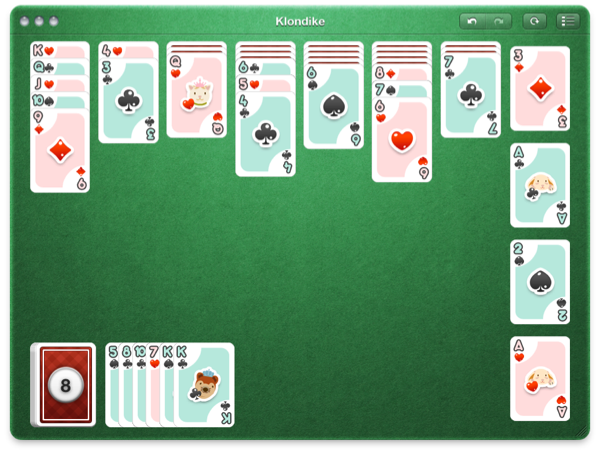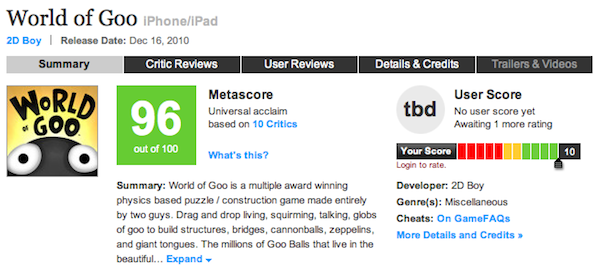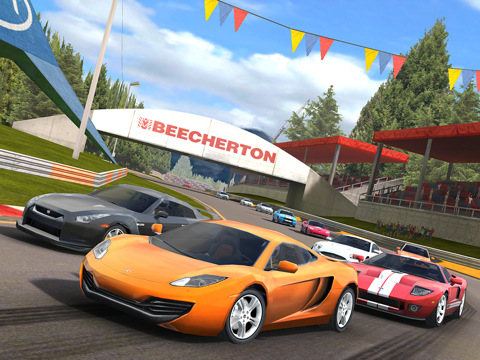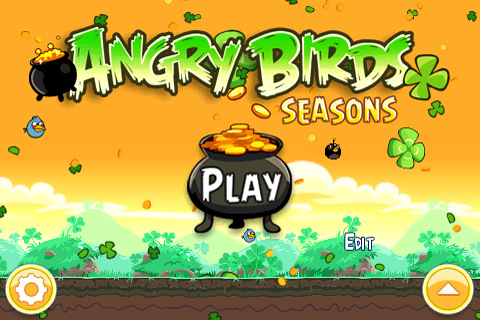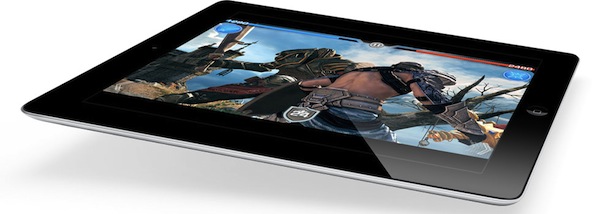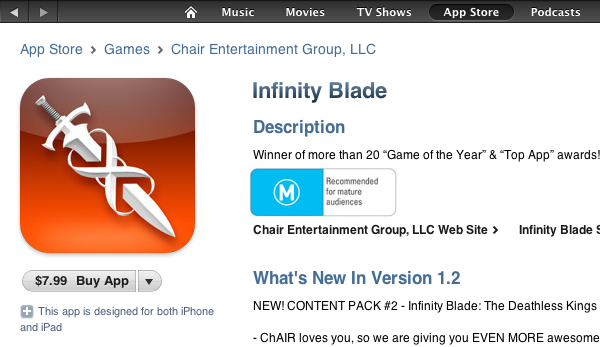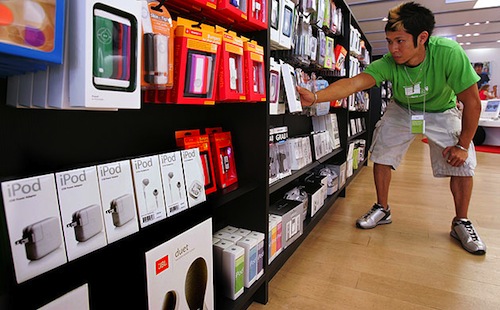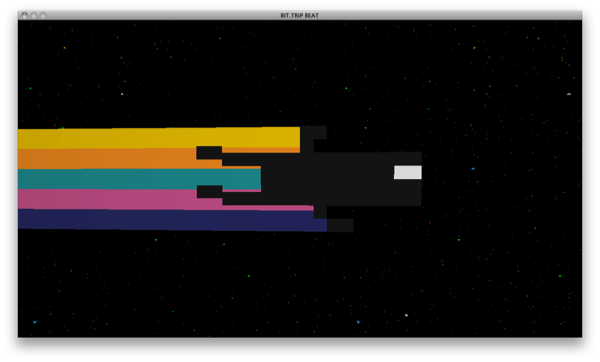There isn’t too much you can say about solitaire on its own. It’s the card game your coworker plays instead of writing formulas for Excel spreadsheets on Windows, but that doesn’t mean we can’t turn solitaire into something more than a time waster. Proof of concept: Mondo Solitaire from Ambrosia Software is solitaire done right. You aren’t just playing the same game of Klondike over and over - instead you’re offered over 300 variants of solitaire madness to choose from. If you include the beautiful game board that looks like it should bundled with Apple’s own Game Center, then you have yourself one premium handful of card games.
Posts tagged with "games"
Mondo Solitaire: Deliciously Beautiful Solitaire For Mac
Doodle Jump Closes Hollywood Deal, Movie Tie-In Version Now Available
Back in January we reported Lima Sky, the developers of popular iPhone game Doodle Jump, closed a deal with Hollywood studio Universal to develop a special version of Doodle Jump featuring the main character from the upcoming animation movie Hop, from the creators of Despicable Me.
The movie tie-in is now available in the App Store, and it’s a free universal app for iPhone and iPad. In 25 levels featuring the usual disappearing and breakable platforms, you’ll have to control E.B., the Easter Bunny’s son, in his quest to become the best jumper before taking over “family’s business” and becoming the Easter Bunny himself. Sounds like a terrible plot but at least the app is free and the cute little monsters from the classic Doodle Jump seem to be there, too.
If you like the idea of Doodle Jump mixed with a Hollywood movie about a bunny (perhaps your kids will), the app can be downloaded here.
iOS Games Now Listed on Metacritic
As noted by TUAW, Metacritic, the popular aggregator of movie / TV show / music / game reviews found online, announced yesterday full support for iOS games. For all the people “keeping score of entertainment” through the service, this means iPhone and iPad games are now listed in a dedicated section that displays the overall top-scoring games, and offers the option to filter down results by category and user score. The clean design of Metacritic and the ease of use of the system will surely come in handy to see what the web thinks of a specific game, as Metacritic basically works by aggregating average scores and reviews from highly visited websites like Slide To Play and Eurogamer.
Metacritic is proud to announce that we have added complete coverage of iPhone/iPad game reviews to our site. As many of you know, we have been publishing monthly IPhone/IPad games guides – recommending the best new iPhone, iPad, and iPod Touch games available for a total budget of $30 — and this popular feature will continue to appear each month.
As the team behind Metacritic also notes, this change marks a major shift in the gaming community that has grown to accept iOS and the App Store as important distribution platforms for great games. The fact that gems like World of Goo (whose iPad version has been insanely successful), Real Racing, Tiny Wings and Aralon are being listed in the top games confirms many people’s theory that you can find all kinds of games on iOS nowadays.
The big names in the game development industry understand iOS is no platform to ignore, and just about any top console game now comes with an iPhone or iPad counterpart of sorts. On Metacritic you can now browse these games and check out what the reviewers are saying on the web, write a review yourself or even check out trailers and videos for a specific app. To see the new Metacritic page in action, head over here and start looking for your next favorite game.
Infinity Blade, Dead Space, Real Racing 2 HD: Now With iPad 2 Support
Just in time for the iPad 2 fever that has begun a few hours ago, three of the most popular iOS games have been updated to include optimizations and new features meant specifically for the iPad 2.
First off, Real Racing 2 HD: not an update, but a brand new version of Real Racing HD from Firemint that follows the steps of Real Racing 2 for iPhone to offer 30 licensed cars, career mode, local or online multiplayer. Most of all, Real Racing 2 HD comes with full iPad 2 support out of the box with enhanced graphics and gyroscope integration. You can find it here at $9.99. Read more
Angry Birds Seasons: St. Patrick’s Day Edition Now Available→
Angry Birds Seasons: St. Patrick’s Day Edition Now Available
As previously reported, Rovio has finally released a new update for Angry Birds Seasons, which now comes themed for Ireland’s St. Patrick’s Day. The update features “green levels” (green is Ireland’s national color), 15 new levels, new achievements and more.
Have the Luck of the Irish and Go Green with this episode of Angry Birds Seasons: The St. Patrick’s Day Edition! After the love fest of Valentines, Angry Birds Seasons is back with the greenest update to date. May Irish eyes shine upon you and as usual Angry Birds gives the most generous updates of any app!
Oh, you can also send St. Patrick’s Day cards to your friends. Go grab the update here.
iOS Game Developers Excited About the iPad 2 Graphics
After the announcement of the iPad 2 last week, we reported developer Firemint, well known for its award-winning Real Racing series, announced they were seriously interested in updating their iPad game for the new device, and had actually been considering its tech specs for a while, even before the official announcement from Steve Jobs. Firemint sort of knew the iPad 2 would be thinner and lighter for a better handling, have a faster processor for improved graphics, and so forth. The iPad 2 has an Apple A5 CPU with graphic performances up to 9 times faster than the iPad 1 – a feature Apple is promoting and Steve Jobs mentioned multiple times on stage. With the iPad 2 available later this week, Firemint will be able to test its updated version of Real Racing HD with gyroscope support, better graphics and perhaps a new control system built around the new tablet form factor.
Firemint, however, isn’t the first game developer that’s excited about the possibilities offered by the iPad 2. MacNN reports industry-leading company Unity has announced that, in spite of their framework already working with dual-core processors like the A5, they’re going to “really fine tune and really optimize it to run fantastic on the iPad.” We guess iOS developers relying on Unity will take advantage of the new features available once the engine is updated with full iPad 2 support.
What about the popular Unreal Engine 3? Epic VP Mark Rein (Epic Games is the company behind the Unreal Engine, or games like Infinity Blade for iOS – based on Unreal) says the iPad 2 is already capable of taking advantage of the iPad 2’s improved performance:
You can see Unreal Engine 3, what happens as we get more power, you can take a PC and put a much more powerful graphics card in, and turn all the dials up in your game to get more detail, more textures, more shaders – things like that. Clearly those are the kinds of opportunities here. More CPU means potentially more physics and more enemies on the screen, a wider view of an environment. It’s just really fantastic.
These are interesting days to see how game developers are quickly announcing support for the iPad 2, unveiled last week and available “on short notice” this Friday. I wonder how many games with “iPad 2 support” in the changelog will be released next week, and how many will need additional weeks to pop up in the App Store. In the coming months, it would be nice to see Apple update its App Store interface to specify features only available for certain devices – it didn’t happen with the powerful iPhone 4, but we’re betting on the iPad 2 to bring an easy-to-read tech specs page to the App Store this time. [via TUAW]
Australian Government Wants To Classify Mobile Games
The Australian Government has today revealed that it plans to enforce a classification of review of any mobile games (and possibly apps) that are referred to the Australian Classification Board after a complaint. Any app referred for review would have to receive a rating of MA15+ or lower to remain on sale legally in Australia.
The Government has said that if the proposal goes through it would force Apple and Google to comply by removing any app that is banned by the Classification Board as well as ensuring that any app that has gone through classification would have its classification displayed for consumers to see.
Currently there is ambiguity over classifying new online content including mobile apps for the iPhone or for Google’s Android OS in Australia with some suggesting that technically every game should be classified, an impossible feat with the number of apps in the App Store alone. The new proposal by the Home Affairs Minister would only require classification of game apps that the Classification Board receive complaints about and the Minister believes that there would be “very, very few games” that would be refused classification (banned).
Apple Removing 32 Games and 3rd Party Mac Products from Retail Stores
According to The Loop’s Jim Dalrymple, Apple is in the process of removing a series of boxed games and third-party Mac products from its retail stores to make room for other services that require space and additional employees. Namely, Apple has apparently decided to cut 32 games off the shelves and products like printers, hard drives and scanners to leave plenty of room for employees to work on the “personalized setups”, a service launched in January that allows customers to go through a friendly Mac setup process together with an Apple Store employee that will guide them through the first OS X installation, iTunes account creation and Mail setup.
Due to the popularity of the personalized service, Apple is expanding it and will need to make more room for employees to work with customers.
Among the products that will no longer be displayed in the retail stores are printers, scanners and possible some hard drives. These peripherals will still be stocked in the store and available if a customer requests them.
At the point of sale, the Apple salesperson will still recommend the customer purchase one of those peripherals if they feel it fits in with the customer’s purchase.
With the removal of 32 games from the Apple Store, the number of games being displayed on the shelves will go down to around 8 per store, according to The Loop. It also appears that employees will being suggesting customers to go look for games in the Mac App Store – again, a very easy way to promote the new digital online store in the heavily trafficked retail locations. Apple has also recently stopped selling boxed copies of MobileMe, which is now exclusively available online and it’s rumored to be revamped soon with a free version for iOS and Mac users.
BIT.TRIP BEAT For Mac Is Trip-Tastic
CommanderVideo has given you a paddle, and you’ll have to keep up with the beat in order to succeed in BIT.TRIP BEAT on the Mac App Store. It’s like pong and maybe like brick breaker, where you bounce back various “beats” that are streamed across your display in conjunction with the level’s vibe. These aren’t your traditional ping pong bits either – they’re high intensity, moving bullets that bounce and force players to return a variety of patterns without missing. The more beats you return consecutively, the more rewarding the game gets with higher intensity tunes and occasionally trippier visuals. But like Guitar Hero, if you miss a beat, you’ll face the bleak reality of failure. Color fades into monochrome, and the screen beat is reduced to mere 8-bit blips. If you’re not getting those additional bonus points by chaining those high-pitched returns, it’s game over for CommanderVideo.


